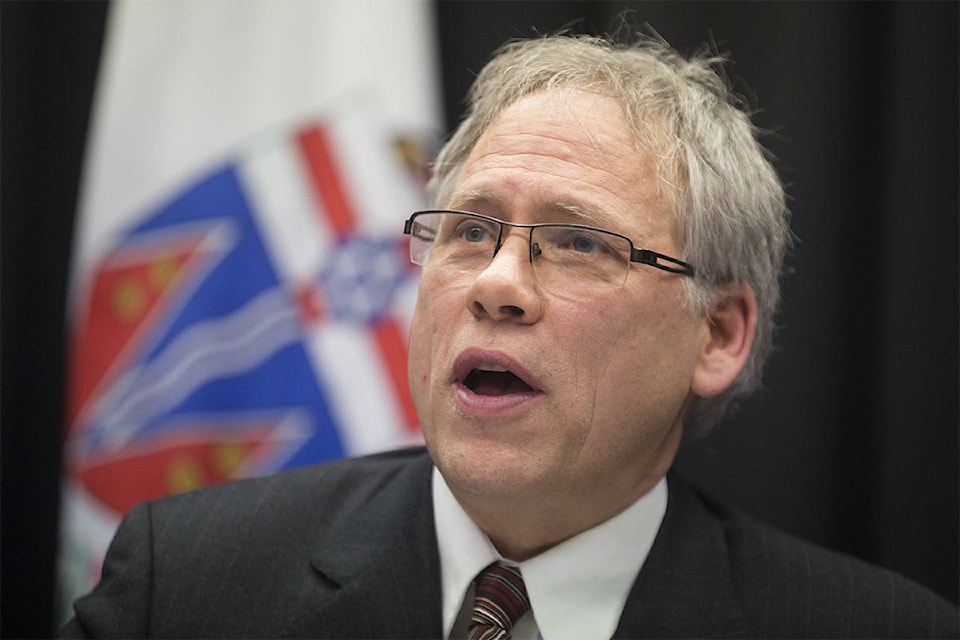The Yukon government is hoping First Nations and municipalities will come up with some of the required money to access nearly $600 million worth of infrastructure cash between now and 2027.
The Association of Yukon Communities says the idea is making them feel anxious.
Like many funding agreements with Ottawa, the Investing in Canada Infrastructure Program requires the Yukon to contribute 25 per cent of the money for projects ranging from transit and green infrastructure to recreation money or the Arctic Energy Fund.
In past cases that quarter has come from the territorial government. Under this new arrangement the territorial government has decided that municipalities and First Nations will now be able to cover some of that 25 per cent out of their own pocket.
Of the $600 million approximately $445 million could come from Ottawa if the Yukon can spend all of it.
The Yukon government has split the entire amount being contributed by Canada into two “buckets.” Sixty-five per cent of Ottawa’s money, or about $290 million, will be matched with money from the Yukon government, according to documents obtained by the official Opposition. The remaining 35 per cent, would be matched by First Nations and municipalities.
Andrea Buckley, an assistant deputy minister with the Department of Community Services, called the model “a new way of thinking about” how Yukon’s contribution is structured.
Municipalities and First Nations came to the government and asked to be able to access some of the money directly, Buckley said.
“The other thing is we don’t want to leave money on the table and so what we’re doing is working now with the municipalities and the First Nations to figure out what their priorities are and what makes most sense,” she said.
It’s not a completely unheard of idea, Buckley said. In the past other federal infrastructure programs have required a three way split between the Federal and territorial government and either a municipality or a First Nation.
“It was different in that those were the federal conditions,” she said. “In this case the federal government doesn’t care who comes up with the 25 per cent as long as someone does.”
The Yukon is still negotiating a bilateral agreement with Ottawa laying out the details of how the money could be spent. That has to happen before the territory can start proposing projects to use the money on.
Yukon is required to pay for pre-approved projects and then apply to Canada to have Ottawa’s portion reimbursed, Buckley said.
In the legislative assembly April 10 Yukon Party MLA Geraldine Van Bibber suggested that the new arrangement would favour the city over rural Yukon.
“Part of the reason that the previous government covered the 25 per cent was because we knew that, for many infrastructure projects, the smaller communities didn’t have the financial resources to cover this portion,” she said.
Community Services Minister John Streicker said the government will not be leaving communities behind. About $400 million worth of the total cash will have the 25 per cent covered by the territorial government, he said.
“The money is going to be distributed across the territory. This is an opportunity for our communities,” he said.
“The volume of spending that we’re talking about here in the territory — there is additional money that we have looked at that we are not sure, with our debt cap, that we will get at. So what we are doing is we’re making this money available to our communities. We will work with all communities to make sure that they have access to these funds.”
For its part, the Association of Yukon Communities has said it is anxious about having to contribute 25 per cent of the cost of projects.
“AYC’S member communities remain concerned that the Yukon’s proposed funding structure may entail the inability to obtain funding for certain projects. Most of us are already faced with tough decisions to ensure efficient municipal operations,” president Diana Rogerson said in a statement to the News.
“The prospect of having to contribute 25 per cent of project costs is causing anxiety, something that we have clearly articulated to Minister Streicker.”
Rogerson said the association is waiting for more details about how the money will be used.
“We have already indicated our willingness to work with YG and First Nation governments to ensure that infrastructure projects are identified and supported that best meet the needs of all Yukoners.”
Buckley said more meetings are being planned in Yukon communities to work out the details of how the program will work.
The government still plans on using territorial money to help fund projects in the communities, she said.
“As you can imagine, there’s a long long list of requirements in communities so obviously we’re not going to get to all of those because we can’t afford it,” she said.
“So this will give them an opportunity to get to some of those projects that are real priorities in the communities but that don’t necessarily make the list.”
Contact Ashley Joannou at ashleyj@yukon-news.com
